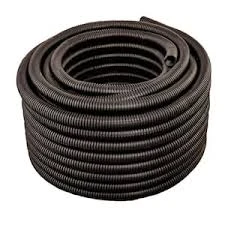Understanding the Function and Advantages of Synchronous Belts in Mechanical Systems
What is a Synchronous Belt?
A synchronous belt, also known as a timing belt, is a crucial component in various mechanical systems, especially in automotive and industrial applications. Its primary function is to synchronize the rotation of two or more shafts. Unlike traditional V-belts, which rely on friction to transmit power, synchronous belts engage with gears or pulleys, providing precision and reliability.
Construction and Design
Synchronous belts are typically made from high-strength materials such as neoprene, polyurethane, or rubber, often reinforced with fibers such as nylon or aramid to enhance durability and tensile strength. They feature teeth that are molded or embedded into the belt surface, allowing them to fit precisely into corresponding grooves on pulleys or gears. This tooth engagement ensures that the belt does not slip, maintaining accurate timing between connected components.
The design of synchronous belts allows for various configurations, including open-ended belts that can be cut to specific lengths, as well as closed-loop belts that form a continuous loop. Synchronous belts come in different sizes and tooth profiles, making them suitable for a wide range of applications.
Applications
One of the most common applications of synchronous belts is in internal combustion engines. In these systems, the timing belt synchronizes the camshaft and crankshaft's rotation, ensuring that the engine's valves open and close at the correct times in relation to the pistons. This synchronization is crucial for optimal engine performance and efficiency, as well as for preventing potential damage.
Synchronous belts are also used in various industrial machines, including conveyor systems, robotics, and automated production lines. These belts can handle high speeds and heavy loads, making them ideal for moving materials and components in manufacturing environments. Their ability to maintain precise timing minimizes the risk of mechanical failure and extends the lifespan of machinery.
Additionally, synchronous belts are found in several household appliances like washing machines and food processors. They replace traditional belts to improve efficiency and reduce noise, contributing to a smoother operation.
Advantages of Synchronous Belts
what is a synchronous belt

1. Precise Timing One of the main advantages of synchronous belts is their ability to provide precise timing between components. This is critical in applications like automotive engines, where even slight timing errors can lead to performance issues or mechanical failure.
2. No Slippage Unlike V-belts, synchronous belts do not rely on friction to transmit power. This characteristic eliminates slippage, leading to improved efficiency and reduced wear over time.
3. Low Maintenance Synchronous belts require less maintenance than their traditional counterparts. They do not need regular tension adjustments, as they maintain their tension throughout their lifespan if properly installed and used.
4. Quiet Operation The design of synchronous belts results in quieter operation compared to chains or traditional belts, making them more suitable for environments where noise reduction is desired.
5. High Load Capacity Synchronous belts are capable of handling heavy loads, making them suitable for various industrial applications, from small machines to large scale manufacturing processes.
Disadvantages of Synchronous Belts
Despite their numerous advantages, synchronous belts do have some limitations. One of the main drawbacks is that they can be more expensive than traditional V-belts. Additionally, if they do fail, the entire system can experience significant consequences, especially in critical applications like engine timing. Furthermore, synchronous belts can be sensitive to environmental factors such as temperature and contamination, which may affect their performance and longevity.
Conclusion
In conclusion, synchronous belts play a vital role in modern engineering and machinery, offering precise synchronization and improved efficiency across various applications. Their unique construction and design make them suitable for demanding tasks in both automotive and industrial settings. As technology advances, the use of synchronous belts continues to evolve, providing engineers and manufacturers with reliable solutions to meet the demands of high-performance systems. Understanding the fundamentals of synchronous belts can aid in making informed decisions regarding equipment design and maintenance.








